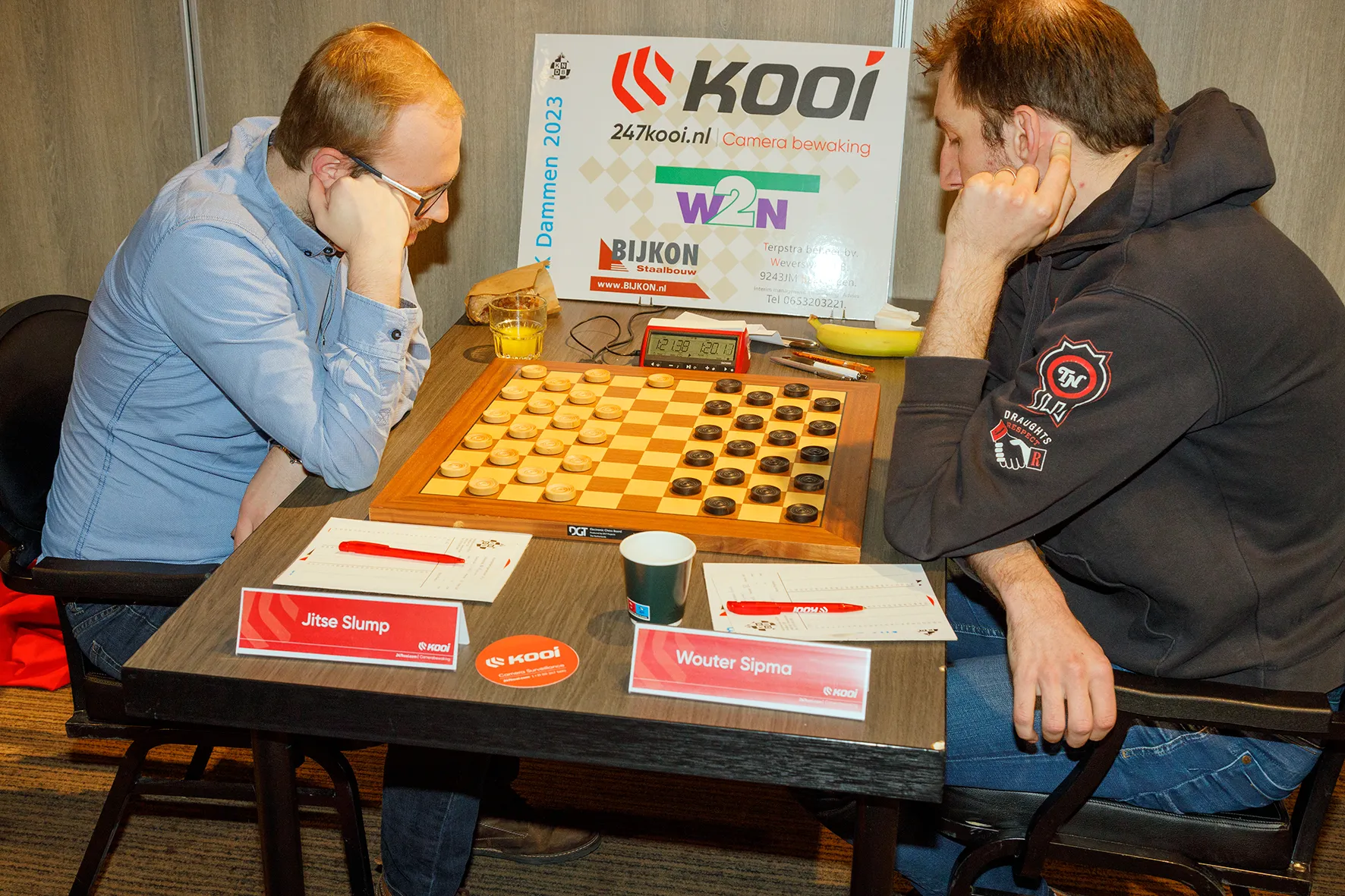It is an honour for me to write an article for Damkunst! Some wonderful analyses have already been written (and hopefully read!). May many more follow.
My 'task' was to analyse a game from the 2023 Dutch Championship (in Drachten, December 2023). The choice was plenty: a strategic masterpiece by champion Groenendijk (in fact, all his victories), a fight game by Baliakin (especially his encounter with super-talent Boxum was epic - a fascinating game type and more than 70 moves of tension) or something of my own? Almost all my games were interesting, with a few experiments here and there that turned out to be good or bad... In the end, in consultation with the chief editor, the choice fell on my game against Jitse Slump from the twelfth round. This because of the rare character of the game after the opening and the fact that I can tell it from the first-person point of view as well as an 'all-knowing analyser'.
I played my last game against Slump 36 days earlier, almost 9,000 km away in the seventh round of the World Cup in Lishui, China. In that game, Slump saddled me with discomfort on two wings as early as the opening, which meant I was relegated to a mere spectator in the middle game, who had to see how I would fare (I survived). Now I had resolved to be well prepared for the game and had thought of an answer to all the opening moves. Except…
